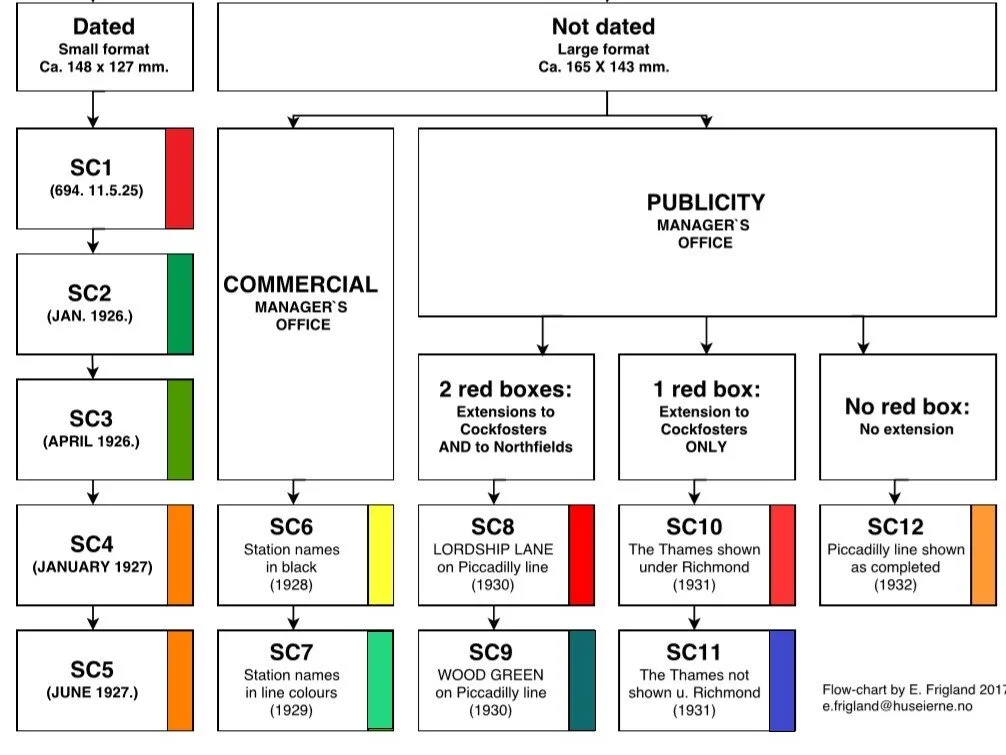 Image 1 of 20
Image 1 of 20

 Image 2 of 20
Image 2 of 20

 Image 3 of 20
Image 3 of 20

 Image 4 of 20
Image 4 of 20

 Image 5 of 20
Image 5 of 20

 Image 6 of 20
Image 6 of 20

 Image 7 of 20
Image 7 of 20

 Image 8 of 20
Image 8 of 20

 Image 9 of 20
Image 9 of 20

 Image 10 of 20
Image 10 of 20

 Image 11 of 20
Image 11 of 20

 Image 12 of 20
Image 12 of 20

 Image 13 of 20
Image 13 of 20

 Image 14 of 20
Image 14 of 20

 Image 15 of 20
Image 15 of 20

 Image 16 of 20
Image 16 of 20

 Image 17 of 20
Image 17 of 20

 Image 18 of 20
Image 18 of 20

 Image 19 of 20
Image 19 of 20

 Image 20 of 20
Image 20 of 20





















1927 London Underground Pocket Map - FH Stingemore
Map of London’s Underground Railways
Designed by Frederick H Stingemore (FHS). Printed by Waterlow & Sons for London Underground Dated June 1927. 5th Edition. 14.7cm x 12.7cm Linen-card. Condition: Very good. some minor stains and creases.
This example of Fred Stingemore’s London Underground Map bears a lovely art deco embossed sticker on its cover for Trinidad Lake Bitumen. This map was given out to visitors by Limmer & Trinidad Lake Ashphalt Co Limited at the 1927 Public Works Exhibition. The exhibition took place in November 1927 at the Royal Agricultural Hall.
Despite a career spanning over 40 years in the London Underground Drawing Office, it is as HC Becks immediate predecessor as map designer that Frederick Stingemore is most well known.
Like many before him, Stingemore grappled with the density and sprawl of the Underground railway network to draft a series of pocket maps from 1925 to 1932. The Stingemore series of pocket maps saw 12 bi-fold linen-card editions, each with a distinctive colour cover. The map design improved in clarity with each iteration whilst remaining topographical in format with some distortion applied for outlying areas. It was Stingemore that had encouraged his colleague, Harry Beck, to resubmit his radical circuit diagram design after it was initially rejected. Becks diagram was published in January 1933.
FREE UK DELIVERY. Non-UK Delivery available, please request a quotation
Map of London’s Underground Railways
Designed by Frederick H Stingemore (FHS). Printed by Waterlow & Sons for London Underground Dated June 1927. 5th Edition. 14.7cm x 12.7cm Linen-card. Condition: Very good. some minor stains and creases.
This example of Fred Stingemore’s London Underground Map bears a lovely art deco embossed sticker on its cover for Trinidad Lake Bitumen. This map was given out to visitors by Limmer & Trinidad Lake Ashphalt Co Limited at the 1927 Public Works Exhibition. The exhibition took place in November 1927 at the Royal Agricultural Hall.
Despite a career spanning over 40 years in the London Underground Drawing Office, it is as HC Becks immediate predecessor as map designer that Frederick Stingemore is most well known.
Like many before him, Stingemore grappled with the density and sprawl of the Underground railway network to draft a series of pocket maps from 1925 to 1932. The Stingemore series of pocket maps saw 12 bi-fold linen-card editions, each with a distinctive colour cover. The map design improved in clarity with each iteration whilst remaining topographical in format with some distortion applied for outlying areas. It was Stingemore that had encouraged his colleague, Harry Beck, to resubmit his radical circuit diagram design after it was initially rejected. Becks diagram was published in January 1933.
FREE UK DELIVERY. Non-UK Delivery available, please request a quotation
